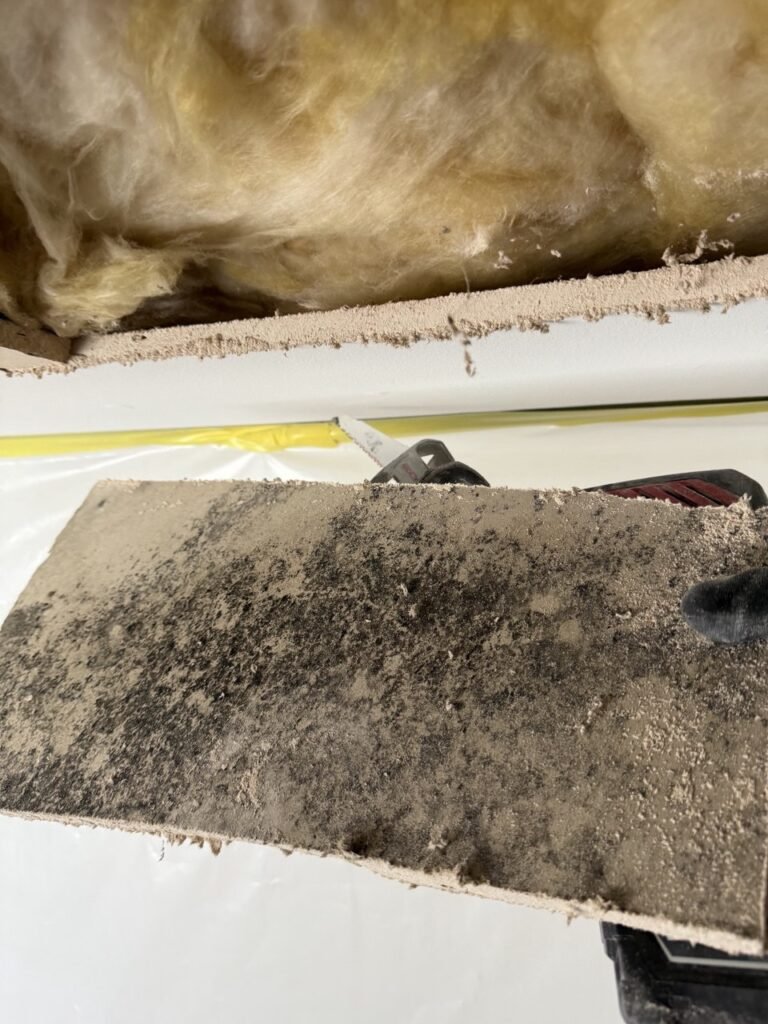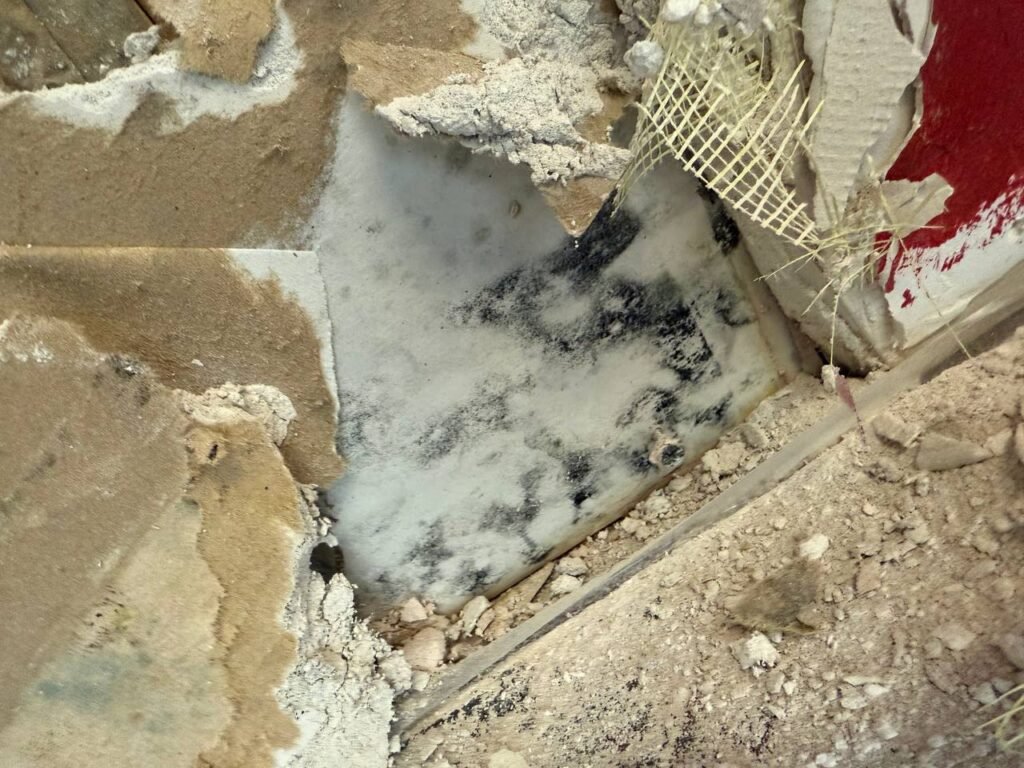Choose Onsite Pro Restoration because we combine speed, precision, and trust. For mold remediation in Los Angeles, our IICRC-certified team delivers same-day response, clean containment, and documented results that satisfy insurers and protect your property. We use advanced moisture mapping, HEPA filtration, and source-removal methods—not shortcuts—to restore healthy indoor air. From older LA buildings to modern condos, we tailor scopes to minimize demolition while meeting S520 standards. Transparent pricing, photo reports, and courteous techs make the process painless. When you need reliable mold remediation in Los Angeles, count on a local North Hollywood crew that treats your home like their own.
Mold Remediation Services for Homes & Commercial Properties
We identify, isolate, and eliminate mold using certified techniques and industrial-grade equipment—restoring clean, safe air to your property.
- IICRC-Certified
- EPA-Registered Solutions
- BBB A+ Rated
- 5-Star Google & Yelp Reviews
Get Started
Service Form
Mold remediation is the professional process of identifying, containing, and eliminating mold growth from your home or business. Whether caused by hidden leaks, humidity, or previous water damage, mold can spread quickly and compromise both structural materials and indoor air quality. Our certified mold remediation services follow EPA and IICRC standards to ensure complete removal at the source—using HEPA filtration, antimicrobial treatments, and controlled demolition when needed. We don’t just remove mold—we restore safety and peace of mind.
What is Mold Remediation?
Mold remediation is the professional process of identifying, containing, removing, and preventing mold growth from spreading throughout a property. Unlike surface-level mold removal, proper remediation targets the root of the issue—excess moisture—while following strict industry standards like the IICRC S520 and using EPA-approved antimicrobial treatments. It’s not just about cleaning; it’s about restoring safety and preventing future contamination.
Mold Removal vs. Mold Remediation — What’s the Difference?
What is Mold Remediation
Mold remediation is the process of identifying, addressing, and preventing the root causes of mold. Onsite Pro Restoration professionals are experts at assessing what type of moisture and mold is a risk to your home. When water damage occurs, acting fast is the best way to prevent the rapid growth and odor of mold. Protect the structural integrity of your home and take action with advanced HEPA air filters that capture dangerous mold spores. Call Onsite Pro Restoration in Los Angeles – see if mold remediation is the right action plan for your home or business.
What Is Mold Removal
Our mold removal service is among the most respected in Los Angeles. Mold damage restoration sometimes means completely removing visible signs of mold with professional help and equipment. That means cleaning or cutting out affected areas on site, scrubbing intensely, and using specialized mold-killing products. We make visible mold colonies disappear, leaving you with a more pristine and healthier living space. Call now for a Los Angeles-based mold specialist you can trust with your home.
Signs You May Need Mold Remediation
Mold can hide in places you rarely look—behind walls, under flooring, or inside HVAC systems—making it difficult to detect until it becomes a serious issue. Recognizing early signs of a mold problem is key to preventing property damage and protecting your health. If you’ve experienced past water damage, high humidity, or notice strange smells or stains, it may be time to consider professional mold remediation.
Musty Odors or Allergic Reactions
One of the most common early indicators of mold is a persistent musty smell, especially in enclosed or poorly ventilated areas. If you or your family experience unexplained allergy-like symptoms—such as sneezing, coughing, watery eyes, or skin irritation—it could be due to mold spores circulating in the air. These odors and reactions are your first warning that mold remediation may be needed.
Visible Mold on Walls, Ceilings, or Baseboards
If you see black, green, white, or fuzzy spots forming on drywall, ceilings, tile grout, or wood surfaces, it’s likely an active mold colony. Even small patches can indicate a deeper, hidden issue within wall cavities or under flooring. Professional mold remediation is essential to safely remove contaminated materials and prevent the mold from spreading further.
High Humidity or Past Water Damage
Humidity levels above 60% can create a perfect breeding ground for mold. If your home feels damp, or you’ve had a recent leak, flood, or burst pipe—even if it was dried out—it’s possible mold has started to grow. Past water damage that wasn’t properly remediated is one of the top causes of recurring mold infestations.
Black Mold Remediation
Our local Los Angeles team will diagnose black mold and get to the root of the problem quickly. Enhance your air quality and eliminate dangerous health hazards.
Demo
If you plan to demo an area of your home affected by mold or other dangerous substances, let us contain it for you. Onsite Pro Restoration provides a safe disposal service for mold-infested drywall, insulation, and flooring.
24/7 Service
Moisture build-up? Damp areas? Water damage? We offer 24/7 service to address any and all mold and water issues in your home or business.
Our Process
Our Mold Remediation Process
We begin with a detailed mold inspection, identifying visible mold and using moisture meters, thermal imaging, and hygrometers to detect hidden moisture. Moisture mapping helps us pinpoint the origin of the problem, ensuring that remediation efforts address both mold and the conditions that allowed it to grow.
Containment and Air Filtration (HEPA)
To prevent cross-contamination, we isolate affected areas using plastic barriers and negative air pressure systems. Throughout the process, commercial-grade HEPA air scrubbers filter out airborne mold spores, keeping the rest of your property safe and clean during remediation.
Safe Removal & Antimicrobial Treatment
Contaminated materials—like drywall, insulation, or carpet—are carefully removed under containment. We then clean and HEPA-vacuum all remaining surfaces and apply EPA-registered antimicrobial agents to kill residual spores and prevent regrowth.
After remediation, we conduct a final inspection and can coordinate third-party clearance testing upon request. Once the area passes inspection, we remove all containment and equipment, leaving your property clean, dry, and mold-free.
What Causes Mold Growth?
Water Intrusion from Plumbing, Roofs, or Appliances
Hidden leaks in walls, slow-dripping pipes under sinks, and overflowing bathtubs or toilets can cause indoor mold. These issues are common sources of mold growth. Roof damage—especially after heavy rain or snow—can allow water to seep into ceilings and insulation. Faulty appliances, such as water heaters, dishwashers, and washing machines, can leak gallons of water. You might not notice the problem right away. These leaks often go unnoticed until mold starts to spread. This requires careful mold removal and repair of damaged materials.Poor Ventilation and Excess Humidity
Areas like bathrooms, laundry rooms, attics, and crawl spaces are often poorly ventilated and prone to elevated humidity. When indoor air can’t circulate properly, moisture builds up on surfaces, especially around windows, vents, and ceiling corners. Over time, this creates the perfect environment for mold spores to take hold. Installing exhaust fans and dehumidifiers can help. However, if mold is already there, you need professional mold remediation. This will stop the mold from spreading.Incomplete Dry-Out After Water Damage
Many homeowners think water damage is fixed when they remove visible water. However, if the structure is not fully dried, hidden moisture can stay behind drywall, under flooring, or inside cabinets. These moist pockets become breeding grounds for mold within 24 to 72 hours. Without a full moisture inspection and dry-out, even a “cleaned up” water event can turn into a mold issue weeks later. Proper mold remediation ensures that both moisture and microbial growth are fully addressed.

Why Choose Our Certified Mold Remediation Services?
Mold exposure can trigger a range of health symptoms, many of which are similar to seasonal allergies. You might notice itchy or watery eyes, frequent sneezing, a runny nose, or persistent coughing. Some people experience throat irritation, headaches, skin rashes, or sinus congestion. For those with asthma or other respiratory sensitivities, mold spores can worsen breathing issues or cause wheezing.
It’s important to remember that not everyone reacts the same way—some individuals are more sensitive than others. Young children, seniors, and those with weakened immune systems may experience more severe symptoms. If you suspect mold is affecting your health, take action promptly. The sooner mold is identified and removed, the sooner you can restore comfort and peace of mind at home.

Is mold damage typically covered by homeowners insurance?
Coverage for mold damage under homeowners insurance can vary widely. In many cases, policies will only cover mold if it results from a “covered peril”—like water damage caused by a sudden plumbing leak or storm damage, not from long-term issues like poor maintenance or humidity.
To get a clear picture, reach out to your insurer (think State Farm, Allstate, or USAA) and ask for details specific to your policy. It’s always a smart move to know where you stand before any surprises pop up.
Why Bleach Isn’t the Solution for Mold
It’s a common misconception that household bleach is an effective way to wipe out mold for good. In reality, bleach only removes the visible staining on the surface—it doesn’t penetrate porous materials where mold hides or destroy the underlying spores that fuel regrowth. This means the root of the problem often survives and returns, especially in materials like drywall, wood, or grout. For truly effective mold control, it takes specialized cleaning agents and professional-grade equipment designed to eliminate mold at its source and prevent it from coming back.
